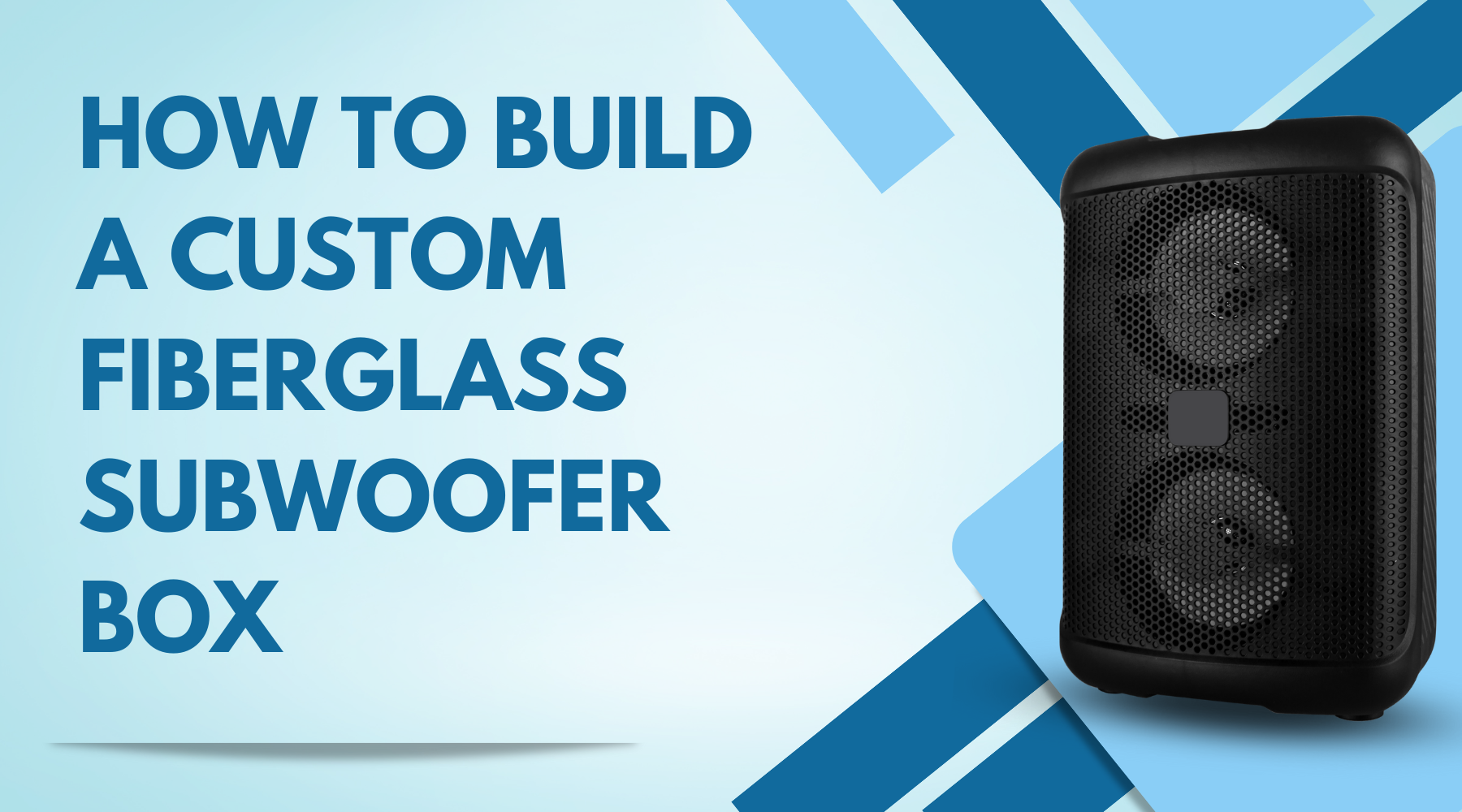How To Build A Custom Fiberglass Subwoofer Box
A strong subwoofer may make all the difference in a car audio system when it comes to producing a deep, resonant bass that gives your music a new perspective. However, a well-designed subwoofer box is necessary to get the best sound quality. We will walk you through the process of creating unique fiberglass subwoofer boxes in this blog article. We'll help you advance your automobile audio experience by providing resources, tools, and detailed instructions.
Getting the Tools and supplies: To construct a bespoke fiberglass subwoofer box, you'll need a few basic tools and supplies. These include foam brushes, scissors, tape, release agent, respirator mask, sandpaper, and a sander in addition to fiberglass matting, resin, and hardener. Before beginning the construction process, it's crucial to make sure you have all the necessary supplies.
Designing the Subwoofer Enclosure: The subwoofer enclosure must be designed before construction can begin. Think about the size of your subwoofer and the space you have in your car. Make a plan or sketch to use as your guide while taking precise measurements. This will make it easier for you to picture the finished item and ensure a perfect fit.
Setting Up the Work Area: A spotless, well-ventilated area is necessary while working with fiberglass. Surfaces should be covered with plastic or drop cloths to protect them against resin spills as you set up your workspace. Use a respirator mask or make sure there is adequate ventilation to prevent breathing in dangerous vapors.
Applying the Fiberglass Layers: Cut the Fiberglass Matting into pieces or strips to cover the whole enclosure. To keep the fiberglass from clinging to the surface, apply a coating of release agent. Utilizing foam brushes, thoroughly coat the fiberglass matting with the resin mixture after mixing the resin and hardener in accordance with the manufacturer's instructions. Apply many applications, letting each one dry completely before moving on to the next. The enclosure's strength and thickness are increased as a result.
After the fiberglass has had time to dry, it is time to smooth off any rough edges and sand the subwoofer box. To smooth off any uneven surfaces, rough edges, or blemishes, use sandpaper or a sander. Take your time to ensure a perfect finish because it will affect the box's overall look and functionality. To increase longevity and attractiveness, try painting or putting a protective finish to the surface after complete cleaning.
For automotive audio enthusiasts looking for the best sound quality and customization, building a unique fiberglass subwoofer box can be satisfying. You can make a subwoofer enclosure that increases your music experience and flawlessly fits inside your car by following the above-mentioned methods. Always put safety first by donning protective gear and working in a space with enough ventilation. In order to appreciate the deep bass that comes with a professionally manufactured bespoke fiberglass subwoofer box, turn up the volume on your automobile audio system. Prepare to experience the rhythm like never before!

